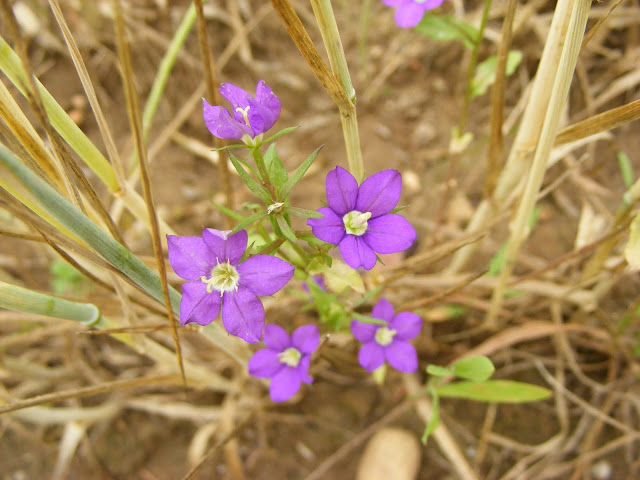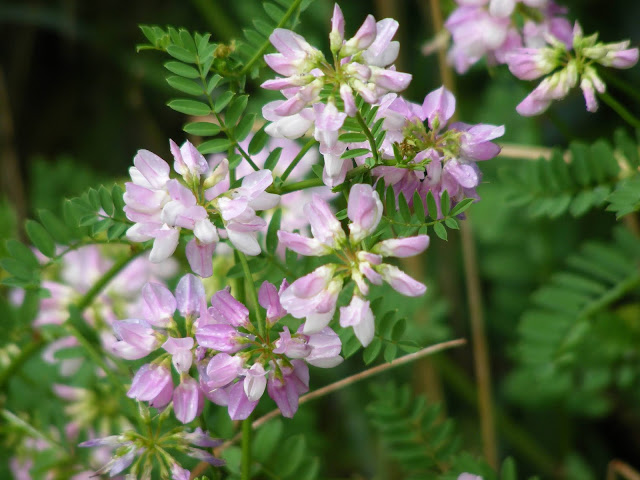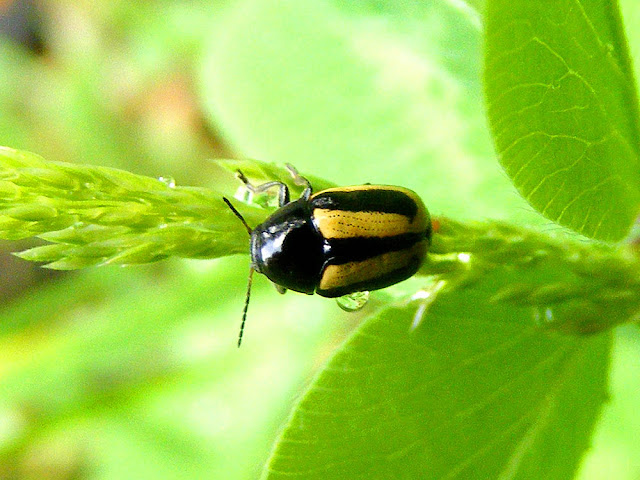A very pleasant in terms of company and species seen outing was led by my redoubtable friend Jean into the fields and woods around the village where he lives on 19 June 2021. The weather was distinctly iffy, but Jean claims to have a hotline to the weather goddess and whilst we did get a little wet and wind blown and have to leg it for the cars at one point, we were blissfully unaware that at the very same moment Saint Nicolas de Bourgeuil was being hit by a tornado and lost its church roof and spire. Very dramatic stuff for the usually mild and temperate Loire Valley.
Here are some photos I took on our outing, which focused on the annual weeds that grow in crops. Many of these plants are now uncommon, due to modern farming methods. In English these species are referred to as arable weeds, and in French they are les plantes messicoles.
After rain stopped play in the wheat field we retreated to the cars, then checked out the roadside, and a track into the woodlands.
 |
An organic wheat field, where there is no treatment applied to prevent annual weeds germinating.
|
 |
Male Common Earwig Forficula auricularia (Fr. Forficule) on a wheat ear.
|
 |
Large Venus's Looking Glass Legousia speculum-veneris (Fr. Miroir de Vénus), growing amongst the wheat in rather sandy soil.
|
 |
Deptford Pink Dianthus armeria (Fr. Oeillet velu), growing on the roadside, not uncommon, but localised.
|
 |
Crownvetch Securigera varia (Fr. Coronille changeante), abundant on many roadsides.
|
 |
Corinne and Michel botanising in a roadside ditch.
|
 |
Ruddy Clover Trifolium rubens (Fr. Trèfle rougeâtre), an uncommon species, growing abundantly along a short section of roadside.
|
 |
Cryptocephala vittatus (Fr. Cryptocéphale rayé).
|
 |
Bird's Nest Orchid Neottia nidus-avis (Fr. Néottie nid d'oiseau), one of about ten flower spikes in a small group of trees. Last year there were about fifty flower spikes, according to Jean.
|
 |
Male Purple Hairstreak Neozephyrus quercus (Fr. Thécla du Chêne) on leaf litter. This species is not strictly speaking rare, but it is rarely seen (only my second time, and last time was exactly ten years ago).
|
 |
Male Purple Hairstreak. To get this view of the upperside is very unusual. Its forewings were folded over oddly. I suspect it had got wet and couldn't fly until it dried out, or was newly hatched.
|












2 comments:
Some nice specimens there.
Interestingly, in the French Wikipedia messicole, it says that in the Anglo-Saxon countries and more widely in Europe, these plants are called segetal flora.
In addition to arable plants and messicole plants, I guess.
Post a Comment